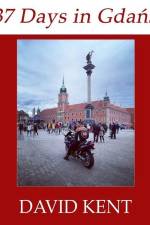av David Kent
629,-
The city of Gdańsk resides on the Baltic coast in northern Poland. It is Poland's principal seaport, and with a population of 470,621, it is also Poland's fourth-largest metropolitan area. The city has a complex history with periods of Polish and German rule, and autonomy as the Free City of Dunzig. It has been an important shipbuilding and trade port since the Middle Ages. In 1361, becoming a member of the Hanseatic League would define its economic, demographic, and urban landscape. The years 1918 through 1939 saw Gdańsk lay in the disputed Polish Corridor, and its ambiguous political status created tensions that culminated in the Invasion of Poland and the first skirmish of the Second World War at Westerplatte. After 1945 the contemporary city was shaped by extensive border changes, expulsions, and new settlements. In the 1980s, Gdańsk witnessed the birth of the Solidarity movement which served to precipitate the collapse of the Eastern Bloc, the fall of the Berlin Wall, and the dissolution of the Warsaw Pact. Today, Gdańsk is the most visited city in Poland with 3.4 million tourists passing through each year (2019). The city constantly maintains top rankings for quality of life, safety, and living standards worldwide, and its historic city center has been listed as one of Poland's national monuments. In this collection, David Kent captures a series of spectacular images of the unique cityscapes, landscapes, and daily life of those of the Baltic city of Gdańsk in Poland, as well as a variety of images from Sopot, Warsaw, and Toruń. All images were taken at various times of the day, night, and year.











